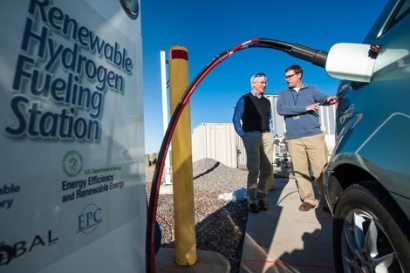
Wood Mackenzie points out the huge momentum behind both CCUS and low-carbon hydrogen in 2021, with announcements of new projects, policies and investment as COP26 spurred companies’ net zero targets. The global energy consultancy highlights key issues for CCUS and low-carbon hydrogen in 2022 as companies and governments switch to delivery mode.
The project pipeline for both CCUS and low-carbon hydrogen saw record growth in 2021. Companies were galvanised by increased net zero targets, new policy support and technology advancements. The CCUS pipeline of announced projects grew seven-fold, with 50 new hub projects globally. The low-carbon hydrogen pipeline more than doubled, with green hydrogen projects making up 75 percent of the announcements.
“We don’t believe we will see the same growth rate for the CCUS and hydrogen pipelines in 2022” said Mhairidh Evans, principal analyst, CCUS and Emerging Technologies, and co-author of the report. “The coming year will be about maturing projects and securing funding. About 75 percent of the CCUS pipeline is in early development. For hydrogen, almost 40 percent of the project pipeline does not have an estimated date of operation and 25 percent does not have an estimated capacity. A mark of success for 2022 will be more projects in advanced development or under construction.”
Wood Mackenzie is tracking 15 CCUS projects aiming for FID this year. If developed successfully, they will add approximately 35 Mtpa of new CO2 capture or storage capacity and will require investment of around US$18 billion. Large volumes of CCUS are not expected to come online in 2022.
More than US$66 billion was invested in hydrogen in 2021, with projects looking at every aspect of the value chain from R&D to refuelling infrastructure.
Wood Mackenzie said more capital flow is needed for hydrogen production projects, requiring an uplift in offtake agreements. This could mobilise the US$3.5 billion – to US$22 billion necessary for hydrogen production projects to reach FID in 2022.
Ms Evans said that in 2022, 33 projects - mainly in Europe and Asia - should begin operation, which will see 0.1 Mtpa of low carbon hydrogen and 50 ktpa of green ammonia enter the market.
Wood Mackenzie also looked at the implications of the United States’ Build Back Better Act. Significant investment hangs on the act passing Congress this year, following on from the US$15 billion provided by the Infrastructure Investment and Jobs Act passed in 2021 to support CCUS and low-carbon hydrogen.
Flor Lucia De La Cruz, senior research analyst, Hydrogen & Emerging Technologies, and co-author of the report, added that 2021 was a big year for policy announcements in CCUS and low-carbon hydrogen.
“We see 2022 as an important year for translating policy into reality, but it’s a tough political ask in some countries and we expect drawn-out negotiations to mean delays” Ms De La Cruz said. “This year, COP27 will be held in Egypt and promises to be a radical turning point for climate policy in Africa. Africa has the opportunity to make a stand and showcase its unique advantages in renewables and green hydrogen.”
Policy developments in Canada, Europe and South East Asia are also explored in the report. Technology scale-up will be crucial to maintain and build momentum for CCUS and hydrogen. Green ammonia has been hailed as one of the cheapest pathways to transport green hydrogen around the world but it, and hydrogen carriers in general, have their challenges.
Wood Mackenzie expects more technological solutions related to storage and chemical plant design in 2022. Direct Air Capture is expected to edge from wildcard to reality, with drivers including US$3 billion of funding through the US Infrastructure Bill, growing demand for e-fuels and the burgeoning voluntary carbon market.
For additional information:

